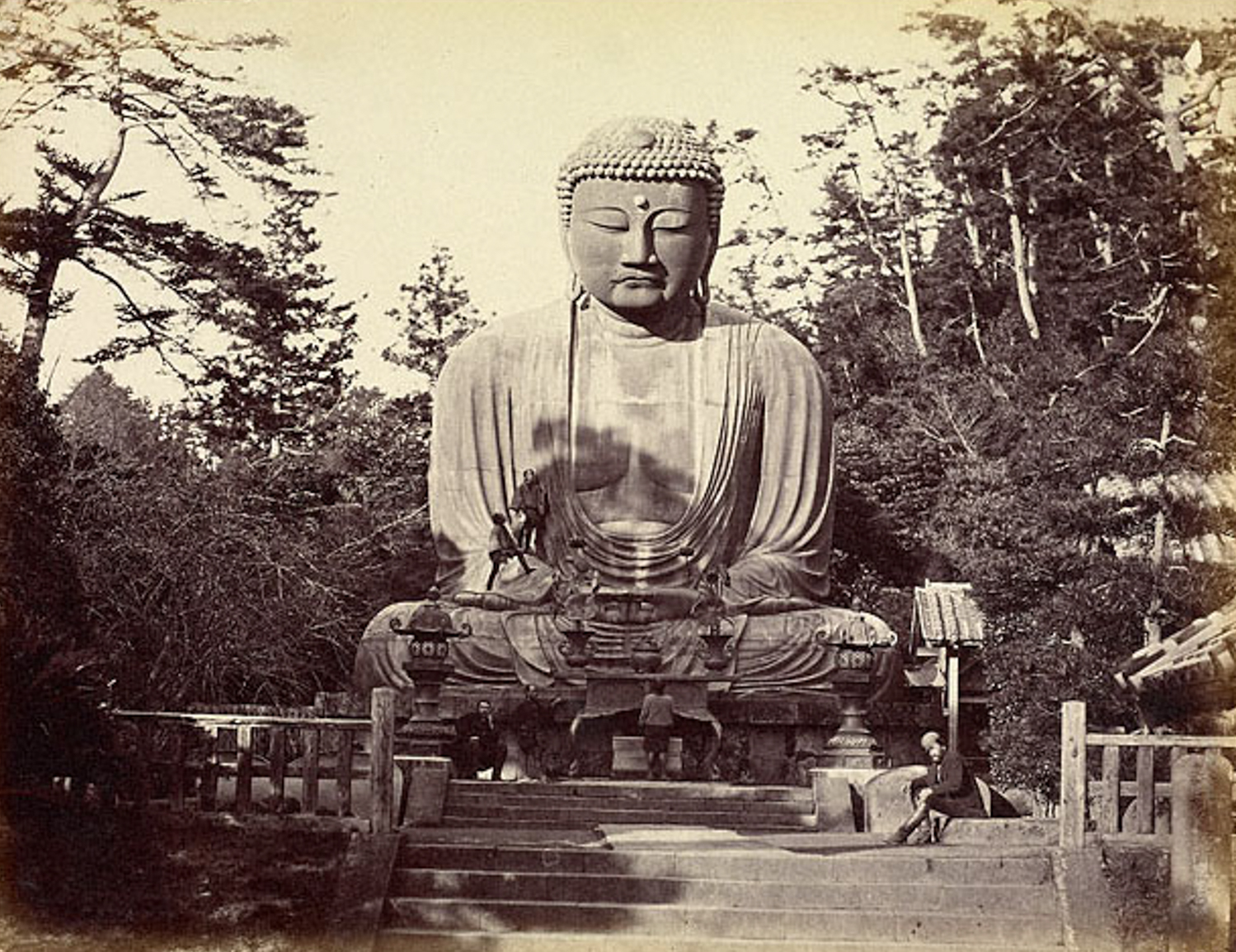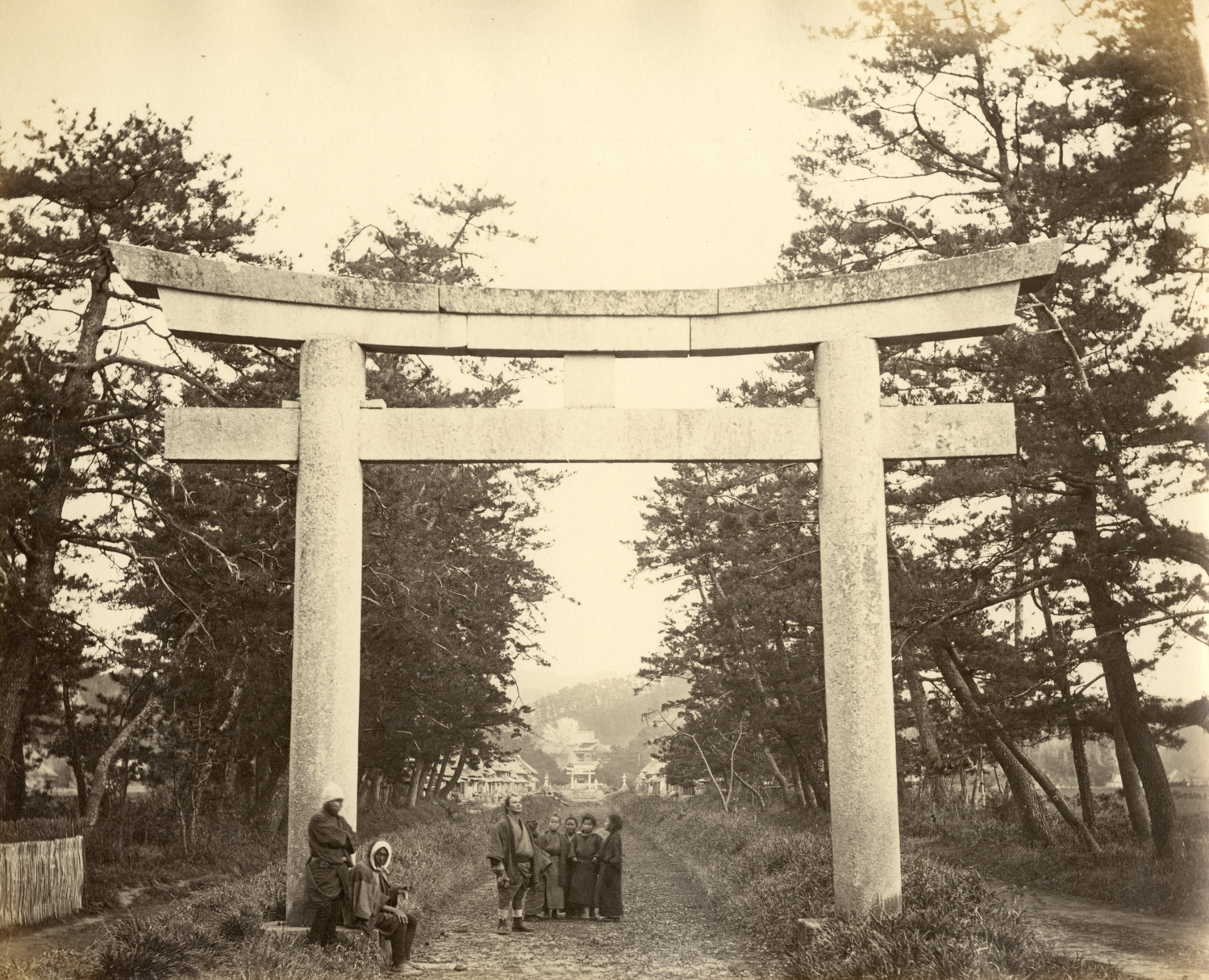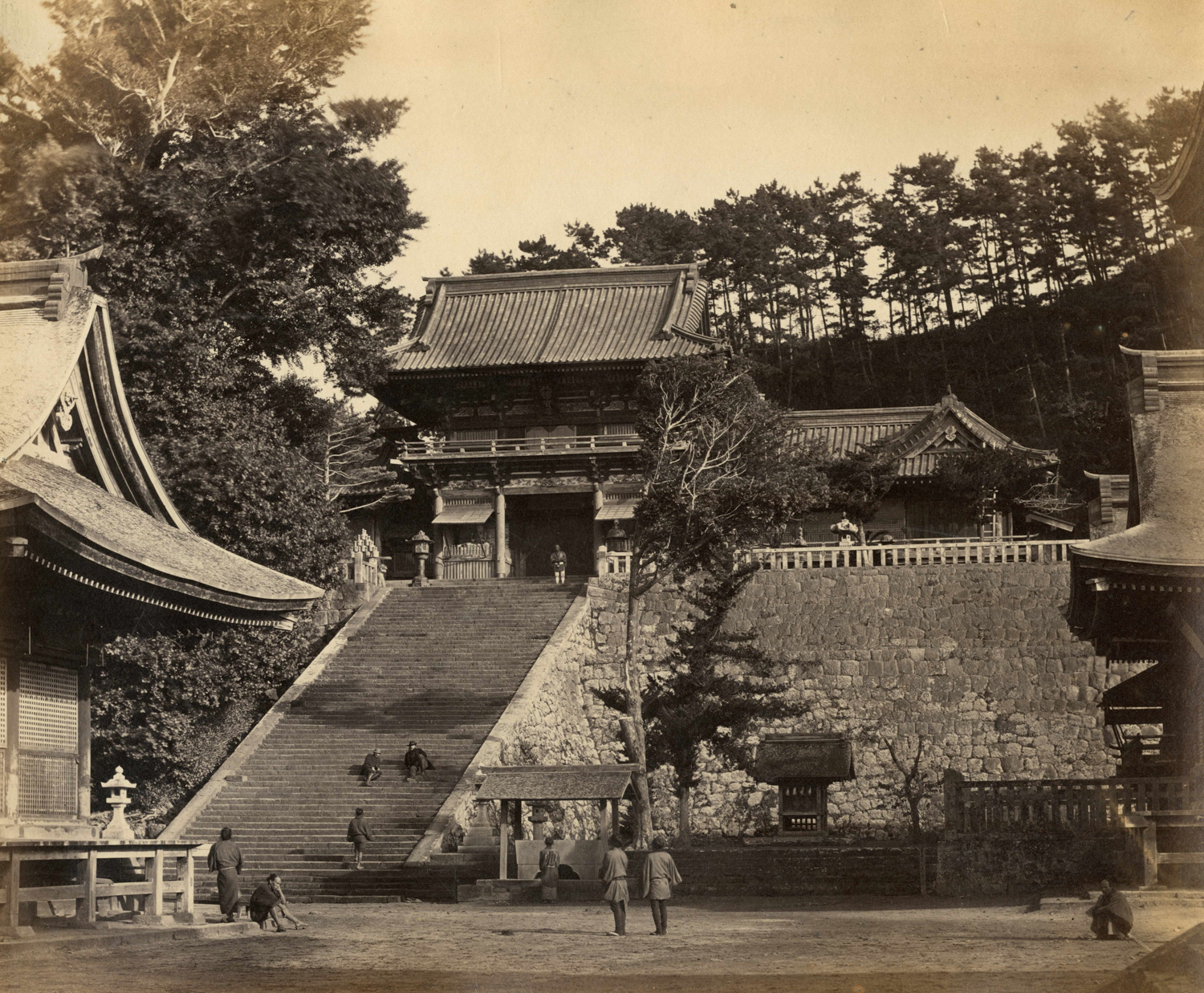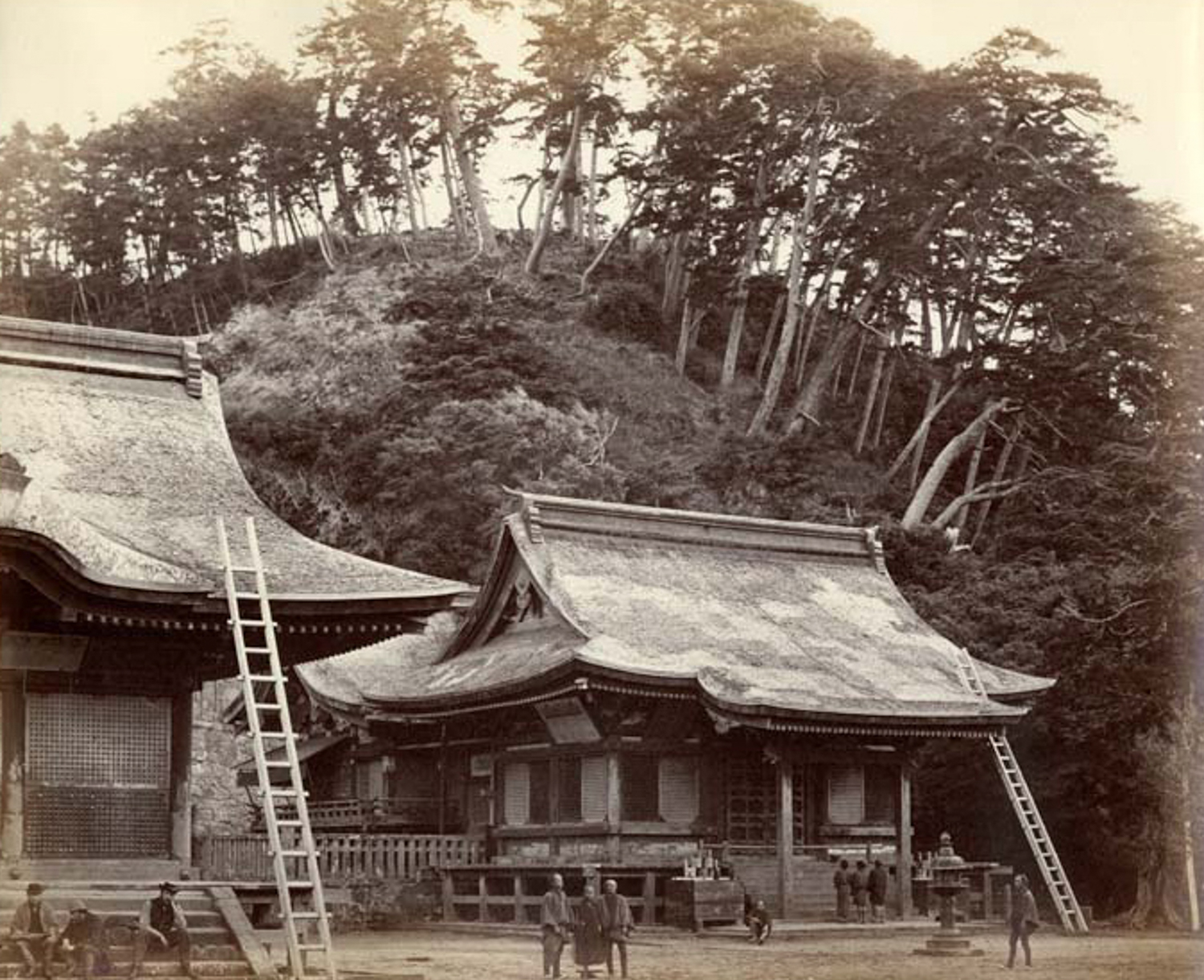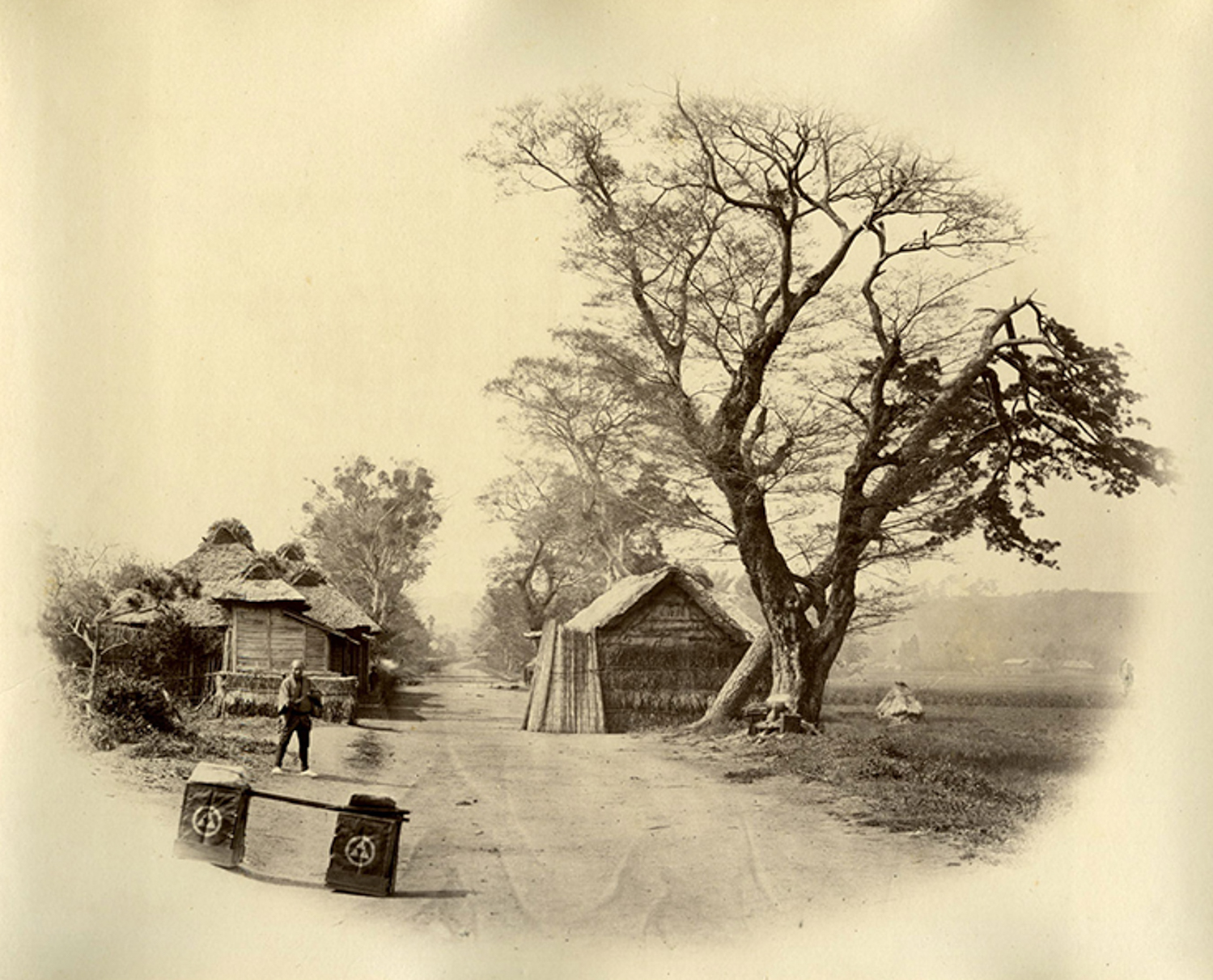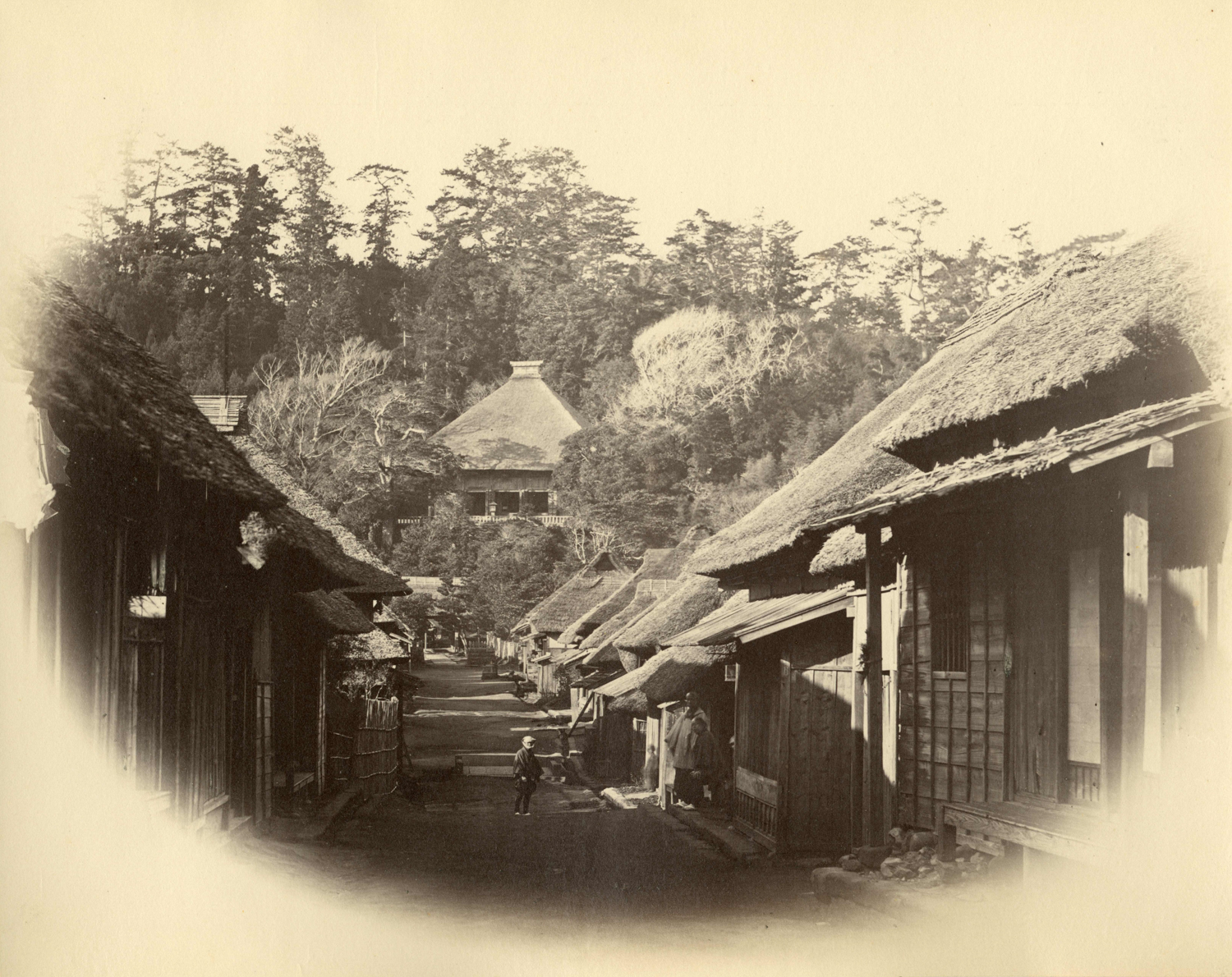Kamakura, close to Yokohama, was the military headquarters of the first Japanese shogunate from the 12th through 14th centuries. It became an important religious center at that time. The temple devoted to Hachiman, a Shinto kami (or, native deity), was founded near Kamakura Bay in 1063, but it was moved to its current site up the hill near the ruling shogun’s headquarters in 1180.
The colossal bronze statue of the Daibutsu, or Great Buddha, dating from 1252, in Kamakura is still one of Japan’s most-visited art treasures today. Beato’s photo-graphs of the Daibutsu, which stands nearly 44 feet tall, are thought to be the first ever taken of it. Beato sits on the right dressed in what looks like riding boots and hat (we know he rode horses, an excellent way to get around Japan at the time).
“…all of a sudden, at the end of the alley, we perceive the giant brazen Divinity, squatting with joined hands, and the head slightly bent forward, in an attitude of contemplative ecstasy. The involuntary amazement produced by the aspect of this great image soon gives place to admiration. There is an irresistible charm in the attitude of the Daiboudhs [sic], as well as in the harmony of its proportions.” —Aimé Humbert in 1874.

